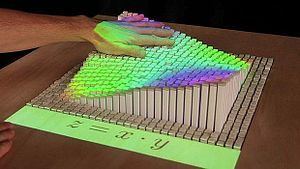 | ||
Jupyterlab building blocks for interactive computing scipy 2016 brian granger
In computer science, interactive computing refers to software which accepts input from humans as it runs. Interactive software includes most popular programs, such as word processors or spreadsheet applications. By comparison, noninteractive programs operate without human contact; examples of these include compilers and batch processing applications.
Contents
- Jupyterlab building blocks for interactive computing scipy 2016 brian granger
- Jason grout jupyterlab building blocks for interactive computing
- History of Interactive Computing Systems
- Later examples
- Tools
- Current Research on Interactive Computing
- References
Interactive computing focuses on real-time interaction ("dialog") between computers and people, and the technologies that enable this.
If the response of the computer system is complex enough, it is said that the system is conducting social interaction; some systems try to achieve this through the implementation of social interfaces.
Jason grout jupyterlab building blocks for interactive computing
History of Interactive Computing Systems
Ivan Sutherland is considered the Father of Interactive Computing for his work on Sketchpad, the interactive display graphics program he developed in 1963. He later worked at the ARPA Information Processing Techniques Office under the direction of J.C.R. Licklider. There he facilitated ARPA's research grant to Douglas Engelbart for developing the NLS system at SRI based on his visionary manifesto published in a 1962 Report, in which Engelbart envisioned interactive computing as a vehicle for human interaction with computers, with each other, and with their knowledge, all in a vast virtual information space. In a 1965 Report he published his early experiments with pointing devices, including the mouse, for composing and editing on interactive display workstations. Engelbart's work on interactive computing at SRI migrated directly to Xerox PARC, from there to Apple, and out into the mainstream. Thus, the tree of evolution for interactive computing generally traces back to Engelbart's lab at SRI.
In December 2008, on the 40th anniversary of his 1968 demo, SRI sponsored the public commemorative event Engelbart and the Dawn of Interactive Computing in his honor.
Some common computing systems previously were:
Later examples
inFORM is a Dynamic Shape Display that can render 3D content physically, so users can interact with digital information in a tangible way. inFORM can also interact with the physical world around it, for example moving objects on the table’s surface. Remote participants in a video conference can be displayed physically, allowing for a strong sense of presence and the ability to interact physically at a distance. HP Sprout released at the end of the 2014 by HP Inc is a projector-camera (pro-cam) system that enables users to interact with physical and digital content while working.
Tools
IPython provides a rich architecture for interactive computing IPython with:
Current Research on Interactive Computing
The need of constant user interaction in interactive computing systems makes it different in many ways from batch processing systems. Thus different aspects of computing systems are significantly different for interactive computing systems and they have been focused on different research. The design of a different programming model has been discussed. Another article describes the importance of security and reliability in interactive computing.
The nature of interactive computing as well as its impact on humans, are studied extensively in the field of Human-computer interaction.
Georgia Institute of Technology has a school named School of Interactive Computing which has formed in 2007. It is still active and offering masters and doctoral degree by collaborations of more than 40 faculties.
The Tangible Media Group of MIT, led by Professor Hiroshi Ishii, explores the Tangible Bits & Radical Atoms visions to seamlessly couple the dual world of bits and atoms by giving dynamic physical form to digital information and computation.
